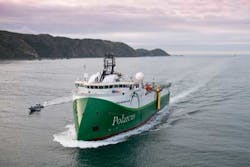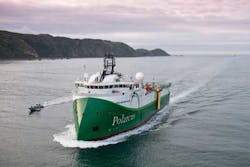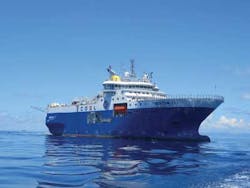P.2 ~ Seismic companies steel themselves for a challenging year
View Article as Single page
Schlumberger said that three older acquisition vessels with lower towing capacity and higher operating costs will be converted to source vessels, allowing for the termination of two third-party leases and the retirement of two owned source vessels. It will also record impairment charges: $806 million.
Electromagnetic Geoservices (EMGS), on the other hand, reported a strongly positive outlook in both the short- and long-terms. The company marked $52.5 million in 4Q revenue, up from $44.9 million in 4Q 2013. It recorded record high multi-client sales, particularly from the Barents Sea.
Market fluctuations
EMGS expanded into the Alaminos Canyon area of the US Gulf of Mexico, which IAGC Executive Vice President Walt Rosenbush identified as one of the biggest areas for growth.
"Seismic companies as well as E&P companies are looking with great hope as Mexico opens up. There is lot of anticipation in that area," Rosenbush said, noting that the regulations concerned with permitting and licensing are expected to be released soon.
He said that the Gulf of Mexico is the most consistent market for multi-client surveying, due to regular leasing sales held on the US outer continental shelf. In fact, Secretary of the Interior Sally Jewell announced the Draft Proposed Program for 14 potential leasing sales in eight planning areas in late January.
With Mexico open for business following the country's historic energy reforms, Rosenbush said that he facilitated a December 2014 workshop in Mexico City with IAGC member companies and Mexico's regulatory bodies to set up a sustainable plan for seismic investment.
"We are looking for a regulatory process that supports seismic multi-client investment and robust exploration and production investment," he said. "You can understand initially that acquiring data in a frontier area is needed, but what ultimately supports long- term growth are the regulations in place to support long-term licensing and to support multi-client in the future."
Although Brazil is currently considered prime acreage, Rosenbush said that uncertainty surrounding the next licensing round and subsequent permitting has diminished the country's attractiveness to seismic companies. Rosenbush said that he did not anticipate the situation to change in the near future, but noted that IAGC is working with Brazilian regulators to resolve the issues.
"Our role as an association is to remove regulatory roadblocks so that companies can be nimble," Wells agreed.
In order to support seismic data acquisition in the active areas off Australia, New Zealand and elsewhere in the Asia/Pacific region, exploration and production companies will need to express interest in new data.
Next steps
Although companies might currently shift focus from expanding their asset portfolios to enhancing production from their existing assets, that cannot be the case forever.
Wells warned against companies waiting too long to perform seismic, so that the demand would exceed supply, saying: "Seismic is the way the oil and gas industry finds the oil the world is going to need." He pointed out that companies could even take advantage of the lower prices and day rates defining the current market by carrying out seismic plans now.
Arnstein Eknes, DNV GL Maritime's segment director for Special Ships expressed a similar concern. "If in great need of cutting cost in the short term, stopping or postponing collection of seismic data typically comes first. However, you need good maps to be cost-effective, and there are still vast areas that have not been mapped," Eknes said. In addition, seismic surveys add value to a company at much lower cost than drilling. The coming period will be tough on the market, but access to good data is vital for the industry in the long term."


